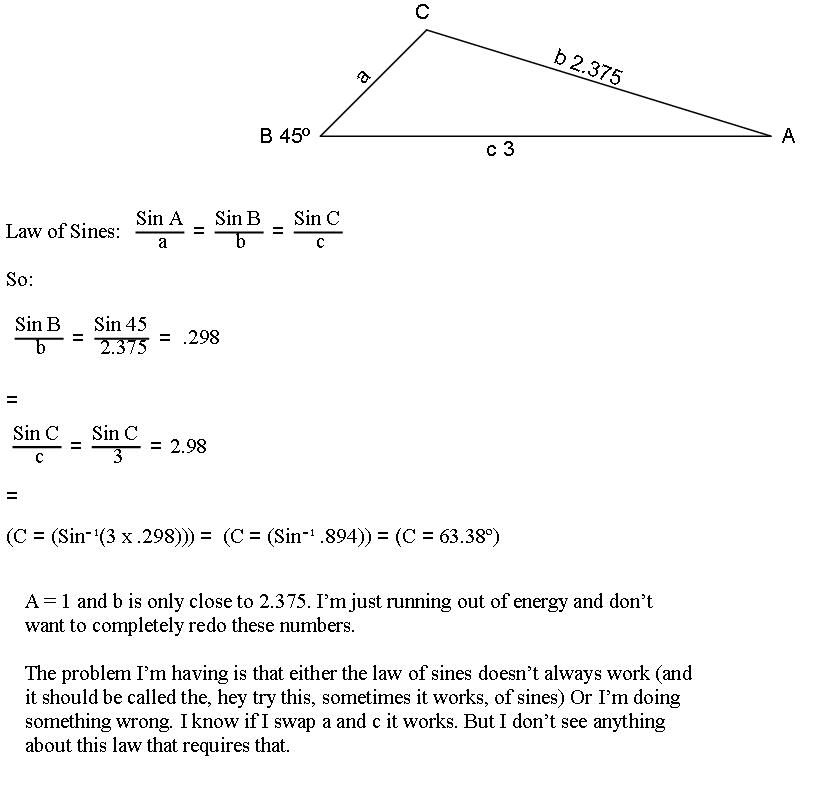Re: Law of Sines
The problem here is that you do not have a unique triangle. The Law of Sines requires that you have a triangle; you have two triangles, not one unique triangle.
I am going to start by ignoring your after-thought statement to the effect that a = 1 and that b = (close to) 2.375. I will start by looking at the problem as shown in the figure: a triangle having an unknown side "a," and two unknown angles "A" and "C."
Without doing any math, I quickly noted that this describes two triangles, and not one. I get that from the fact that when attempting to prove two triangles are congruent, you can use SSS, or SAS, or ASA, but not SSA. Your sketch is an SSA situation. You have two known sides, but the known angle is not between them. Therefore, you do not have a unique triangle.
You can construct the two triangles by laying out side "c" with a length of 3. You draw a ray (theoretically infinite in length), starting from the left hand side of "c," and going up at a 45 degree angle. Your side "a" will be somewhere along that ray. Finally, you start from the right hand side of "c," and draw a circle with radius 2.375. That circle will intersect the ray at two places. These will give you two triangles, both of which match your initial conditions.
I did the math (but do not have time now to check it), using the Law of Cosines: c^2 = a^2 + b^2 - 2ab(cos B). Using the known sides and the known angle, I found that side "a" can be either 1.058 or 3.189. If you look at the triangle that has "a" at 3.189, you will see that the angle "A" is 63.28 degrees. That is the solution that you obtained from the Law of Sines.


